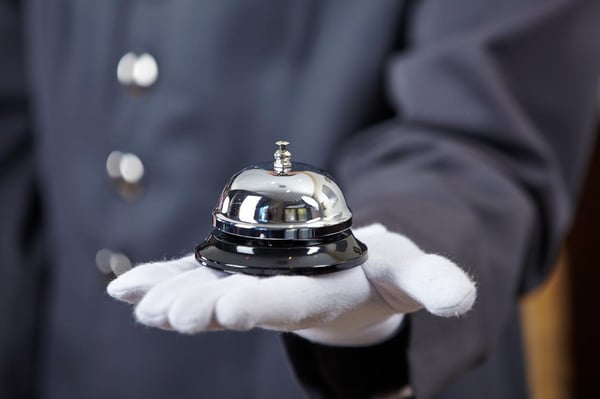Published on
Top 10 Lessons on Continuing Education Management: From the Hotel Industry (Part 2)

This is the second of Emily Richardson’s three-part series, looking at the key lessons she learned about continuing education management from her time as a hospitality manager at a number of hotels and resorts across the United States.
In the first part, Richardson discussed the first three lessons she learned: the need to effectively use resources to ensure maximum enrollments, the importance of relationship marketing and the value of defining an institution’s differentiators. In this second installment, she discusses the next four lessons.
Number 7: Facilities make a difference
Is the room clean? The bed made? The bathroom stocked? These were the questions being asked of each and every housekeeper in hotels where I worked, since we knew these details were critical for our customers. The same goes for the classroom facilities or the availability of food services for adult learners. For most higher education institutions, the focus is on traditional, day students. But what happens to those students who take classes in the evenings or on the weekends? How are we meeting their needs? Is the furniture adult friendly? Is the campus bookstore open to accommodate evening students? Are the continuing education offices open after 5 p.m. or on weekends?
Number 6: If you feed them, they will come
Why is it that food seems to cause satisfaction in many? Whether that is a good meal prepared at a five-star resort or a platter of hoagies for a group of evening students, food is a unifier. It provides the time and place for conversation, feedback and discussion. This is one component that extends well past the hospitality industry or that of higher education, but instead is used throughout the world as a means to building relationships.
Number 5: Continuous improvement and change
The challenge, but also the satisfaction, for many in the hospitality industry is that no two days are alike. Each day brings new customers, service problems, events and, ultimately, constant change. For many who work in the industry, it is the constant change that drives their success and enjoyment.
The same can be said about continuing education. One week can be focused on a program in project management, the next, a group of senior citizens taking a learning excursion to a museum, and the next, a group of small children exploring the field of science. Each event is unique, each customer is different and each day is full of constant movement and change. Both hospitality and continuing education require individuals who welcome change and motion, who don’t fear the unknown and who welcome the chance to learn, grow and meet new expectations daily.
Number 4: Word of mouth is a double-edged sword
Do you ever discuss the good experiences of service? Isn’t it all about the bad ones? When I worked with hospitality students to define “good service,” they had trouble doing so. Their examples were fraught with things that go wrong, like, “I hate when my food takes a long time to get to the table!” So, what is good service and how is that measured? It is difficult to define.
What one learns quickly in the hospitality industry is that one bad service encounter with a customer can easily go viral through word of mouth. How many people did you tell about your last poor service encounter? One? Three? Seven? In most cases, individuals tell at least seven others about a bad service experience.[1] But it doesn’t end there, because those seven friends then tell that story again to their seven friends — and suddenly one bad experience ends up being featured in more than 50 stories!
The same thing happens in the world of education. One bad service encounter with financial aid, enrollment services, the library, student affairs or an instructor can easily end up hurting a program. Sure, many of us don’t like to think of our students as “customers,” but that is what they are. We need to train our staff to work with difficult customers just as much as one has to train hotel staff.
This was the second installment of Emily Richardson’s three-part series. To read the first part, please click here. To read the third part, please click here.
– – – – References
[1] Stefanie Amini, “The Top Three Online Customer Support Software,” I Want It Now: Customer Service in the Instant Gratification Era, November 29, 2012, available from http://iwantitnow.walkme.com/the-top-three-online-customer-support-software/#.UdrLxKzeigI
Author Perspective: Administrator



